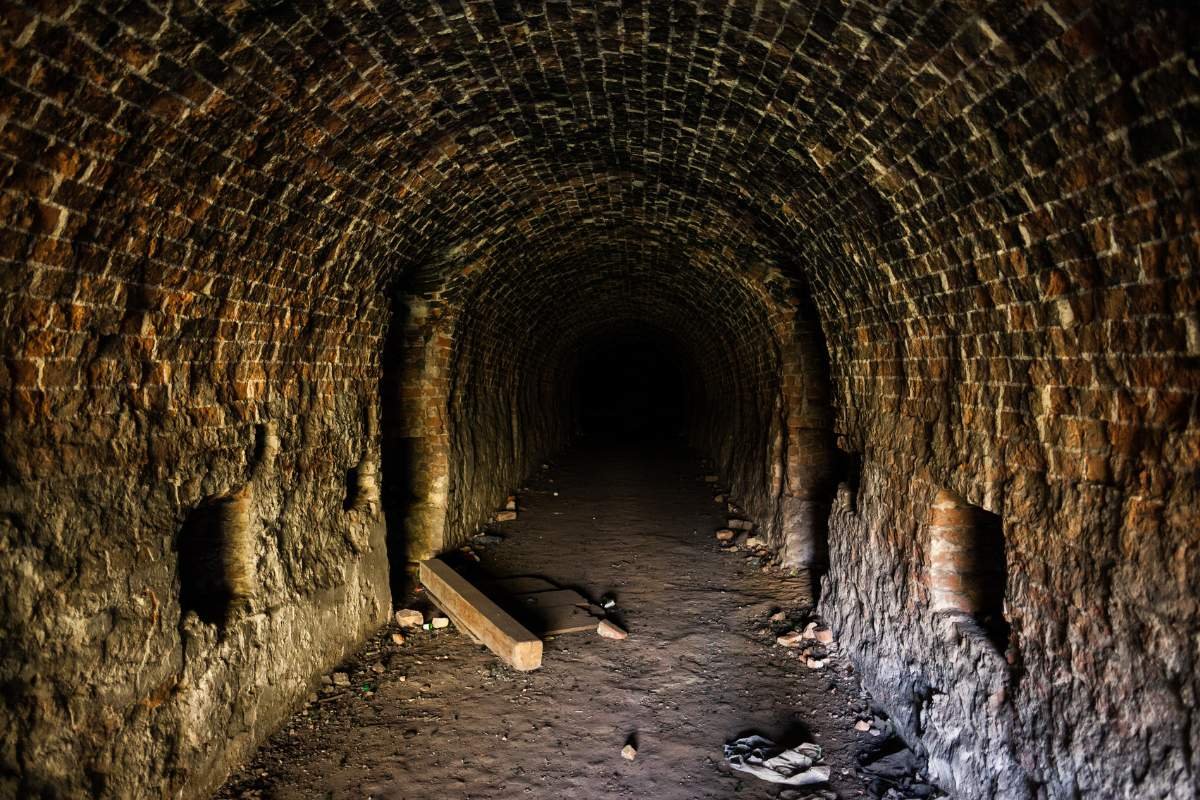If you drive, cycle, or walk near public roads such as city streets or highways, the chances are you’ve seen a variety of traffic control equipment without even realizing it. From road signs to high-tech sensors, these tools are designed to reduce accidents. They also improve safety and streamline traffic flow.
In 2025, the importance of this traffic equipment is greater than ever. As urban populations rise, cities are adopting smarter, more sustainable solutions to protect pedestrians, cyclists, and drivers. This guide breaks down the seven most important types of traffic control equipment along with future innovations that will shape the roads of tomorrow.
Top 8 Effective Traffic Control Equipment of 2025:
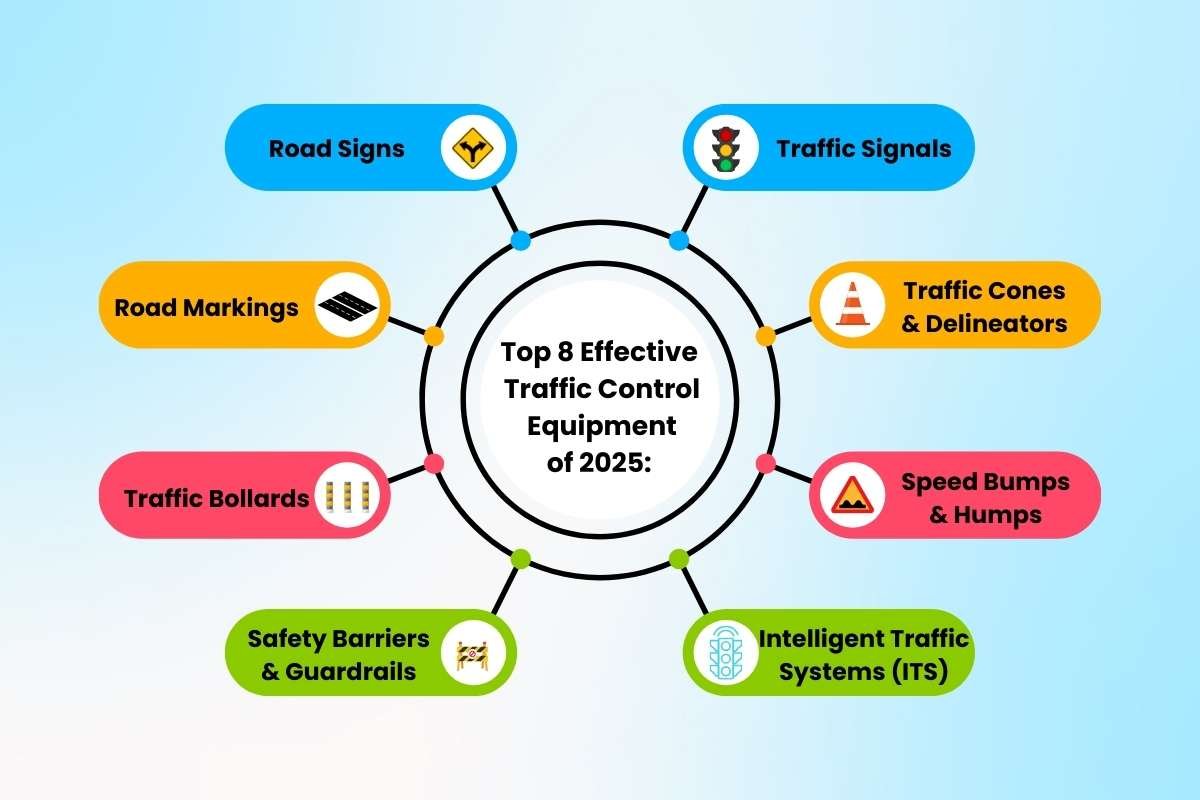
1. Road Signs
Road signs remain the foundation of traffic safety. They guide drivers, warn about hazards, and provide critical information to prevent accidents. In fact, without them, road systems would fall into chaos.
- Regulatory signs: Indicate speed limits, stop requirements, or parking restrictions. In 2025, many cities will use digital and solar-powered signs that can update in real time depending on traffic or weather conditions.
- Warning signs: Alert drivers to intersections, roundabouts, slippery surfaces, or roadworks. For example, smart warning signs can now flash automatically during rain or fog to prevent accidents.
- Informative signs: Share details about services, rest stops, and upcoming destinations. Some newer informative signs even use QR codes or Bluetooth to give drivers personalized directions.
Modern road signs often use reflective materials or LED lighting, making them visible in all weather conditions and at night. They are not just passive tools anymore; they are becoming interactive and adaptive, a big leap forward in road safety.
2. Traffic Signals
Traffic signals are essential for smooth traffic flow. Particularly in urban areas, where congestion can create delays and increase accident risks.
- Vehicle signals: The classic red, yellow, and green lights remain the backbone of traffic control. However, in 2025, sensor-based signals that adjust light duration according to real-time traffic density are increasingly common.
- Pedestrian signals: Indicate safe times for people to cross crosswalks. Many pedestrian signals today include audible alerts for visually impaired individuals and countdown timers to reduce crossing anxiety.
- Smart signals: AI-powered signals integrate with cameras and road sensors to balance vehicle and pedestrian flow, improving fuel efficiency and reducing emissions by cutting idle times.
By using smart algorithms, traffic signals are now capable of reducing traffic jams by up to 20% in busy metropolitan areas.
3. Road Markings
Road markings provide direct visual guidance on how to navigate safely. They are among the most cost-effective yet vital forms of traffic control equipment.
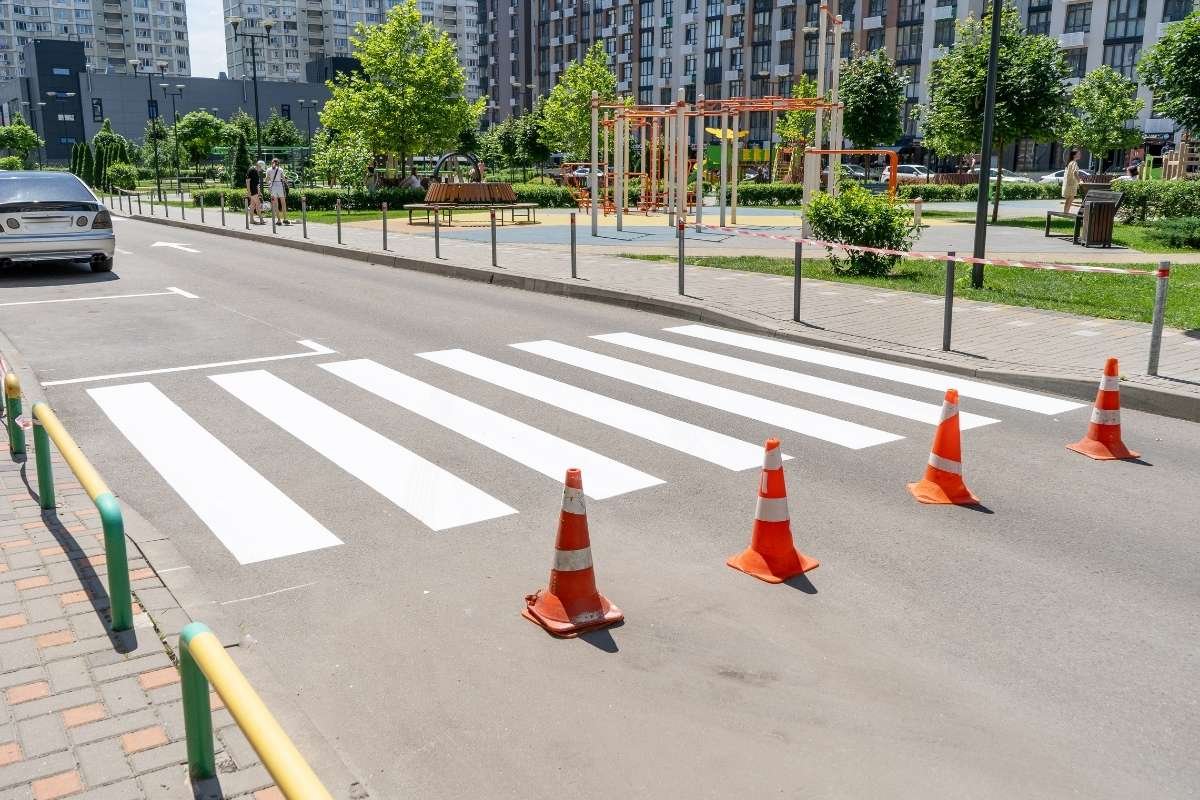
- Pavement markings: Define lanes, parking spots, pedestrian crossings, and no-overtaking zones.
- Curb markings: Indicate where parking is allowed, restricted, or prohibited. Cities now often use color-coded curb markings for clarity.
- Object markings: Highlight physical obstacles, bridge edges, or construction zones, helping drivers avoid collisions.
- Reflective markings: Glow at night, improving visibility for long-distance driving. High-grade reflective paints can last up to five years and reduce nighttime accidents.
- Thermoplastic markings: Durable, skid-resistant, and eco-friendly, they are widely used in 2025 for high-traffic roads.
Some experimental cities are testing smart road markings with LED-embedded paint that can shift in real time—widening lanes during rush hour, creating temporary bike paths, or highlighting emergency-only lanes as needed.
4. Traffic Bollards
Traffic bollards are more than just posts. They’re frontline protectors of pedestrians and infrastructure.
- Removable bollards: Installed temporarily during events, parades, or when restricting certain streets for pedestrian-only use. They are lightweight but durable.
- Collapsible bollards: Offer flexibility in high-security or restricted zones, allowing emergency vehicles quick entry while keeping out unauthorized traffic.
- Fixed bollards: Provide permanent protection for schools, government buildings, and busy sidewalks. Their strength prevents vehicles from entering restricted zones.
- Smart bollards: Equipped with IoT sensors and sometimes even cameras, these bollards can detect accidents, alert authorities, or even lower automatically for ambulances.
Beyond physical safety, bollards are increasingly being used for aesthetic and urban design purposes. They are often styled with lighting, stainless steel finishes, or greenery to blend with smart city landscapes.
5. Safety Barriers & Guardrails
Barriers and guardrails act as the last line of defense against high-impact accidents. They are especially vital on highways, flyovers, and bridges where vehicles travel at higher speeds.
- Metal guardrails: Flexible structures designed to redirect vehicles back onto the road.
- Crash barriers: Engineered to absorb kinetic energy, minimizing injuries during collisions.
- Concrete barriers: Provide strong and permanent lane separation, reducing head-on crashes.
- Smart crash cushions: Use sensors to alert traffic management centers when hit, helping with rapid emergency response.
These systems not only reduce fatalities but also protect infrastructure such as tunnels, poles, and bridge supports.
6. Traffic Cones & Delineators
Temporary traffic control equipment is crucial during road construction, maintenance, or emergencies.
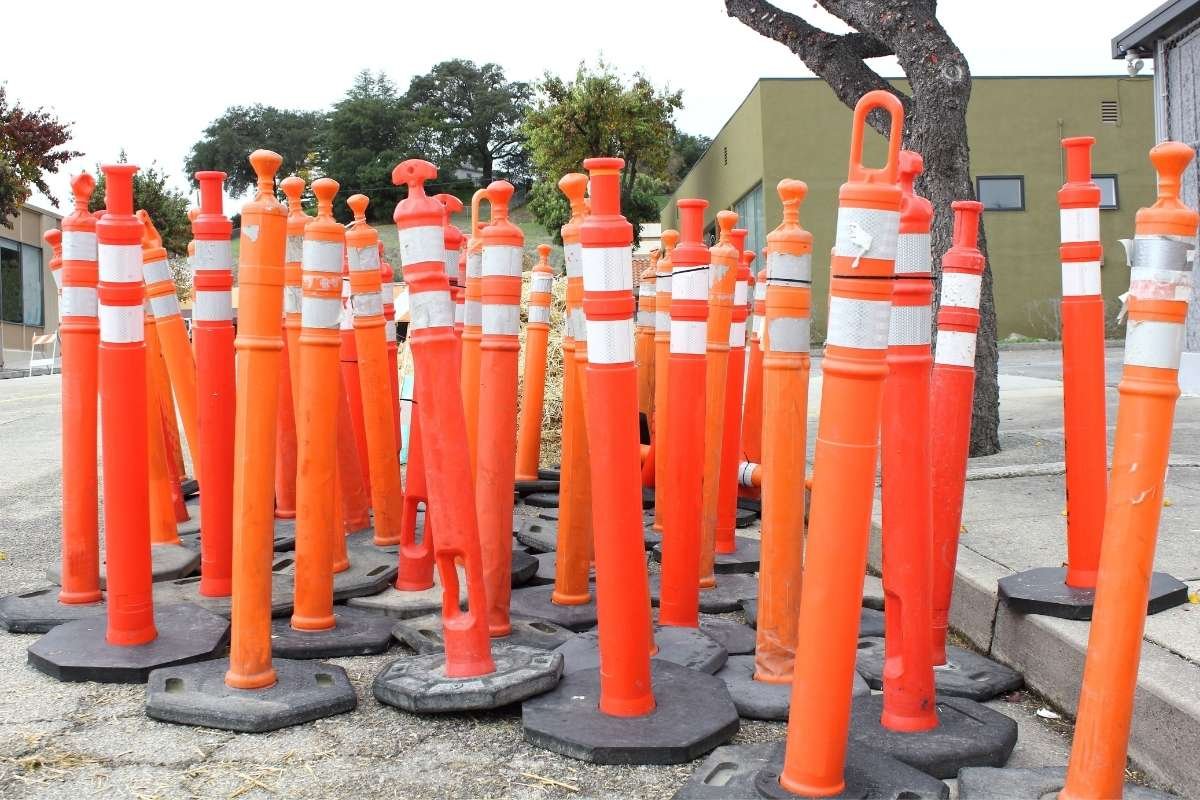
- Cones: Portable, lightweight, and often made of reflective PVC for nighttime use.
- Delineators: Flexible posts that withstand repeated vehicle impacts and still spring back upright.
- Solar-powered delineators: Illuminate pathways at night without electricity, making them sustainable and cost-effective.
They may look simple, but cones and delineators are the first line of communication during unexpected road changes.
7. Speed Bumps & Humps
Speed bumps and humps are essential for slowing vehicles down in sensitive areas.
- Speed bumps: Sharp rises designed for maximum vehicle slowdown, typically near schools and hospitals.
- Speed humps: Broader and gentler, ensuring smoother vehicle flow while still reducing speed.
- Smart speed bumps: Adaptive technology that adjusts height depending on a car’s speed. Remaining flat for drivers following the limit, but rising for speeding vehicles.
These installations are proven to reduce pedestrian accidents significantly in urban neighborhoods.
8. Intelligent Traffic Systems (ITS)
Perhaps the most futuristic form of traffic control equipment, ITS integrates technology, AI, and data for proactive safety.
- Adaptive traffic lights: Respond dynamically to rush-hour congestion.
- Vehicle-to-infrastructure communication (V2I): Enables autonomous cars to “talk” to traffic signals and road sensors.
- AI-powered surveillance: Identifies traffic violations and accidents instantly, alerting authorities in real time.
ITS is transforming how cities think about transportation. Shifting from reactive to predictive safety.
Future Trends & Sustainability in Traffic Control Equipment
The future of traffic control equipment lies at the intersection of technology and sustainability.
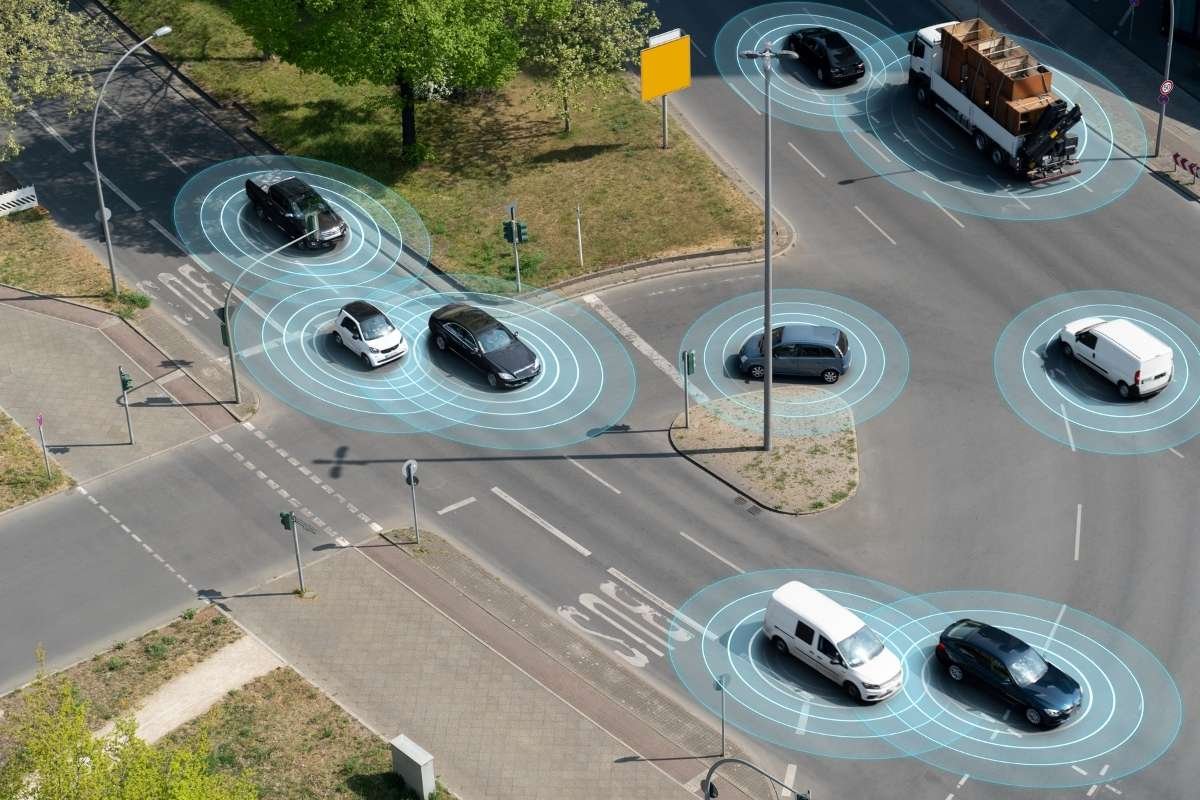
- Solar-powered signs and signals: Lower energy consumption while ensuring uninterrupted functionality.
- Eco-friendly materials: Barriers and signs made from recycled composites and biodegradable paints are gaining traction.
- Integration with smart cities: Equipment will increasingly work in tandem with sensors, apps, and connected vehicles.
- Autonomous vehicle readiness: As self-driving cars become mainstream, traffic systems will need to adapt with more digital, data-driven signaling.
These trends signal a shift toward safer, greener, and more intelligent road ecosystems.
Conclusion:
By 2025, traffic control equipment will greatly surpass traditional road signs and signals. The development of smart cities is paving the way for growing traffic control and turning them into intelligent, sustainable, and adaptive devices. They will no longer just regulate traffic, but they can also save lives, mitigate congestion, and support sustainable development.
Every device, including traditional pavement markings and guardrails, and dynamic, AI-enabled traffic management systems. They can be used to create safer, more intelligent roadways. As cities begin to expand, advancements in traffic control systems will be equally important as advancements in urban mobility systems.
FAQ:
1. What is traffic control equipment, and why is it important?
Traffic control equipment refers to devices like road signs, signals, barriers, markings, and smart systems that regulate traffic flow, improve safety, and prevent accidents. Without them, roads would be chaotic and far less safe for drivers and pedestrians.
2. How does modern technology improve traffic control equipment in 2025?
In 2025, traffic control equipment often includes smart features like AI-powered traffic lights, solar-powered road signs, adaptive speed bumps, and IoT-connected bollards. These technologies make roads safer, reduce congestion, and support sustainable urban planning.
3. What role does sustainability play in traffic control equipment today?
Many cities now use solar-powered signals, recycled materials for barriers, and eco-friendly paints for road markings. This shift not only reduces costs but also supports green initiatives in urban infrastructure.




